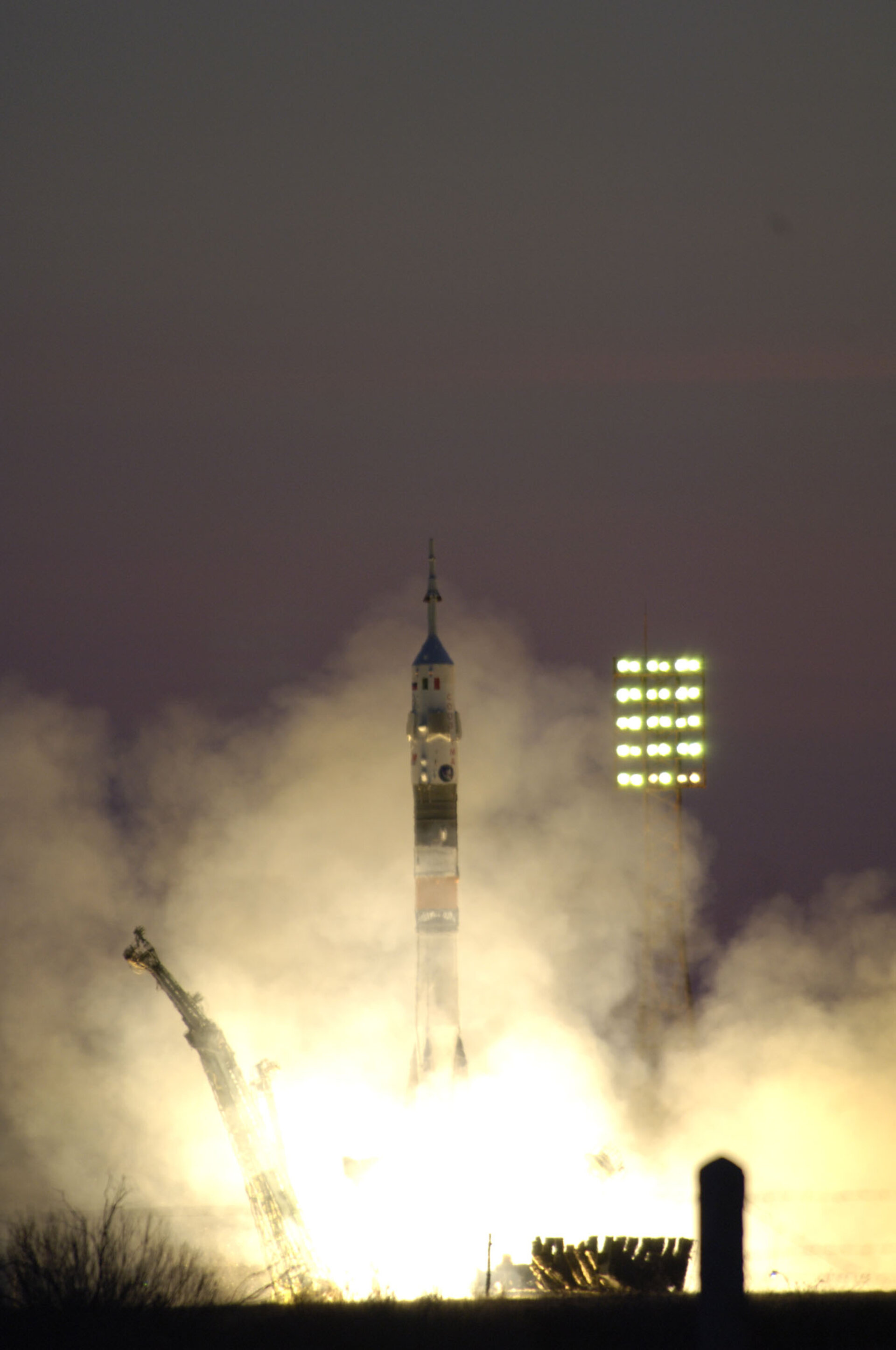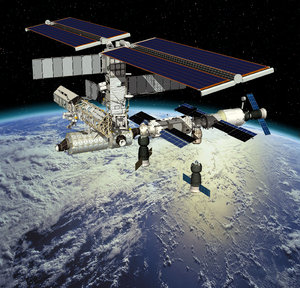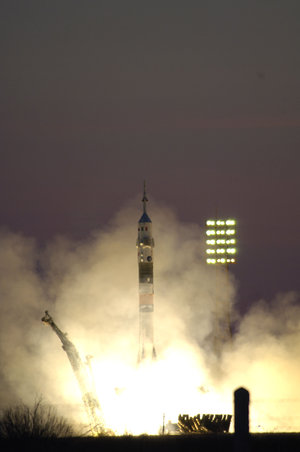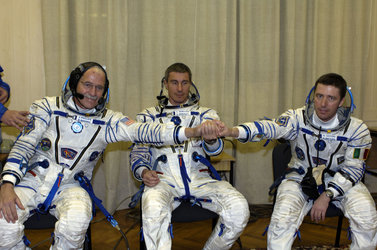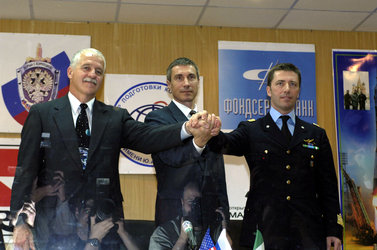ESA astronaut Roberto Vittori embarks on his second Soyuz mission to the ISS
ESA PR 20-2005. The Eneide Mission, with European Space Agency astronaut Roberto Vittori and the ISS Expedition 11 crew, lifted off today in the Soyuz TMA-6 spacecraft on Flight 10S to the International Space Station (ISS). The launch, from the Baikonur Cosmodrome in Kazakhstan, took place at 06.46 local time (02.46 Central European Summer Time).
Having reached orbit after a nine-minute ascension phase on a Soyuz rocket, Soyuz TMA-6 will now take about two days to travel to the ISS with its 3-man crew: Roberto Vittori, from Italy, Russian cosmonaut Sergei Krikalev, who is to be the Expedition 11 Commander on the ISS, and NASA astronaut John L. Phillips, who will be the Expedition 11 Flight Engineer. They are scheduled to dock automatically with the Station at 04:19 CEST on 17 April, with the hatch opening two orbits later at 07:05.

Vittori is the Flight Engineer on Soyuz TMA-6, taking an active role alongside Soyuz Commander Krikalev in piloting and docking the spacecraft. He will also be playing a key role in the reentry, descent and landing on his return flight. This is the sixth flight for the Soyuz TMA series, the first having been in October 2002, with ESA astronaut Frank De Winne from Belgium on board. By the end of the Eneide Mission European astronauts will have flown in all of the Soyuz TMA spacecraft. The new Soyuz TMA-6 will replace the Soyuz TMA-5 which flew the Expedition 10 crew to the ISS last October and has been docked with the Station since then. Soyuz TMA-6 will remain docked with the ISS for approximately six months, serving as an emergency lifeboat.
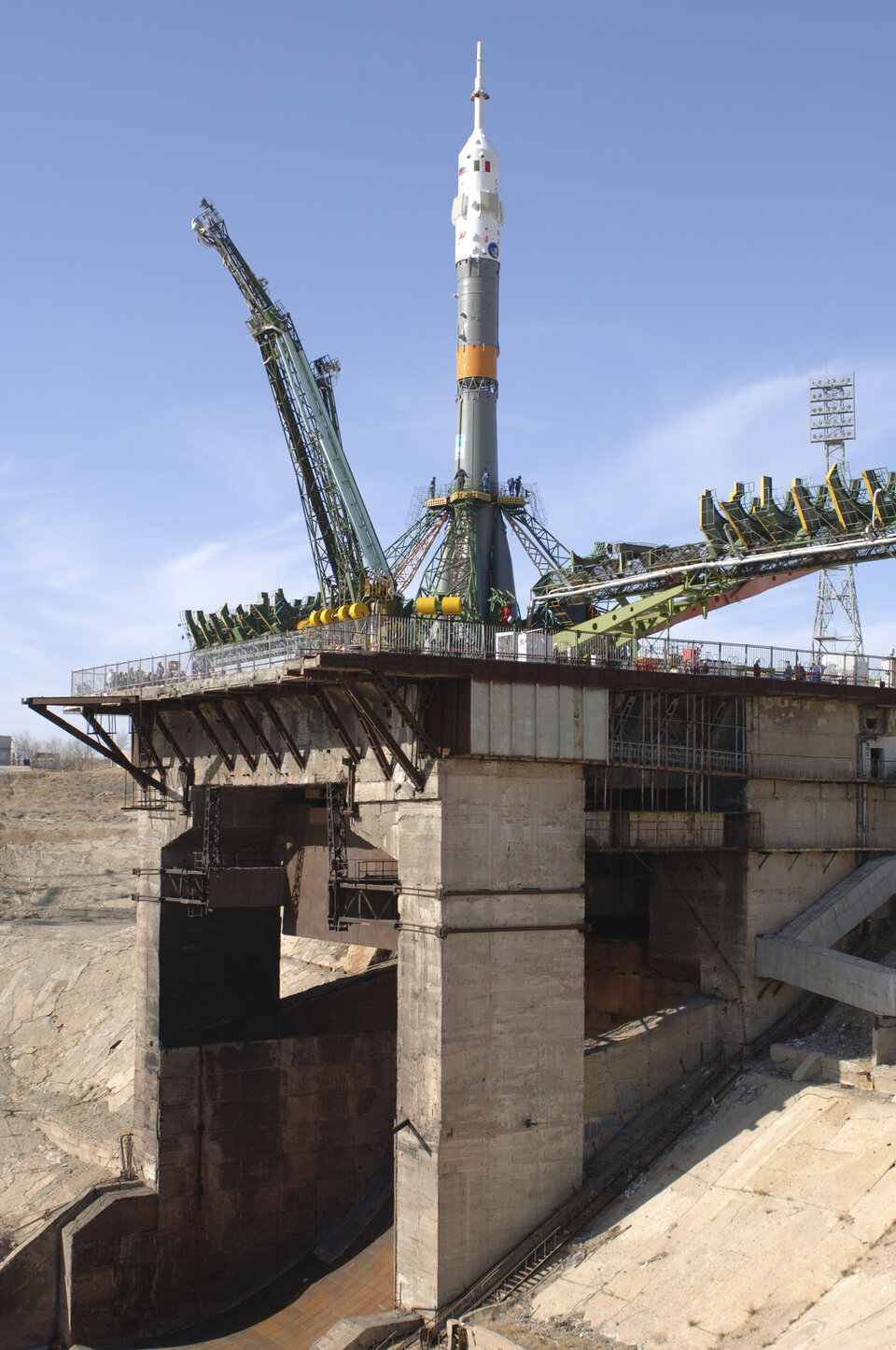
Roberto Vittori becomes the first European astronaut to visit the ISS for a second time. During his 10-day mission, eight of them on the ISS, he will carry out an extensive experiment programme in the fields of human physiology, biology, technology and education.
The Eneide Mission is being co-sponsored by the Italian Ministry of Defence and the region of Lazio in the framework of an agreement between ESA and Roscosmos, the Russian federal space agency. Many of the experiments were developed by Italian researchers and built by Italian industry and research institutions.

The experiments cover a wide spectrum, including research into fatigue in the upper limbs of astronauts, the results of which should help to find methods of countering fatigue, thus maintaining the condition and improving the performance of astronauts, which is of great importance to proposed longer-term missions. The biology research includes a plant germination experiment, which will look into the feasibility of growing sprouts of herbaceous crops as a high-nutrition food source in space. This experiment also contains an educational element, the aim of which is to involve and interest school children in space science by having them germinate seeds on Earth at the same time as Roberto Vittori does so in space. On the technology side there are experiments which will test the durability of electrical components for use in microsatellites and an experiment whose objective is to measure and verify, in low-Earth orbit, the GPS and EGNOS signals which will be used in the combined GPS/EGNOS navigation system for spacecraft control and guidance. EGNOS (European Geostationary Navigation Overlay Service) is Europe’s first venture into satellite navigation.

“I am very pleased to see this mission successfully on its way”, said Daniel Sacotte, ESA’s Director of Human Spaceflight, Microgravity and Exploration Programmes. “The launch of Eneide is the culmination of a great deal of effort by all parties, in Italy, Russia and the ESA centres involved in its preparation, and I know that this effort will continue throughout the mission and beyond. This cooperation will bring benefits to European citizens of all ages through the extensive scientific, educational and technological programme that will be carried out during the mission, and I hope it will fire the imaginations of the children who will become our scientists and engineers of tomorrow.”
The 10-day Eneide Mission concludes with the return to Earth of the Soyuz TMA-5 landing module, scheduled for midnight (Central European Summer Time) on 24/25 April. On the return flight Roberto Vittori will be accompanied by the ISS Expedition 10 crew, Leroy Chiao and Salizhan Sharipov, who arrived at the ISS on 16 October in Soyuz TMA-5. Krikalev, ISS Expedition 11 Commander, and Phillips, ISS Expedition 11 Flight Engineer, are replacing them.
Information on the Eneide Mission and its progress can be obtained from www.esa.int/eneide and www.spaceflight.esa.int/eneide/status.
For further media information please contact:
Franco Bonacina
ESA Media Relations Division
Paris (France)
Tel: +33 1 5369 7155
Fax: +33 1 5369 7690
Dieter Isakeit
Erasmus User Centre and Communication Office
Directorate of Human Spaceflight, Microgravity and Exploration Programmes
Noordwijk (The Netherlands)
Tel: +31 71 565 5451
Fax: +31 71 565 8008
e-mail: dieter.isakeit@esa.int


